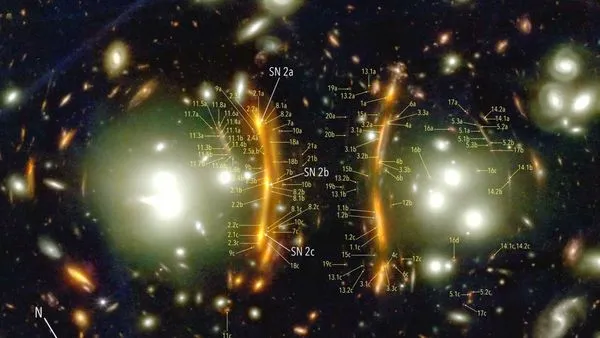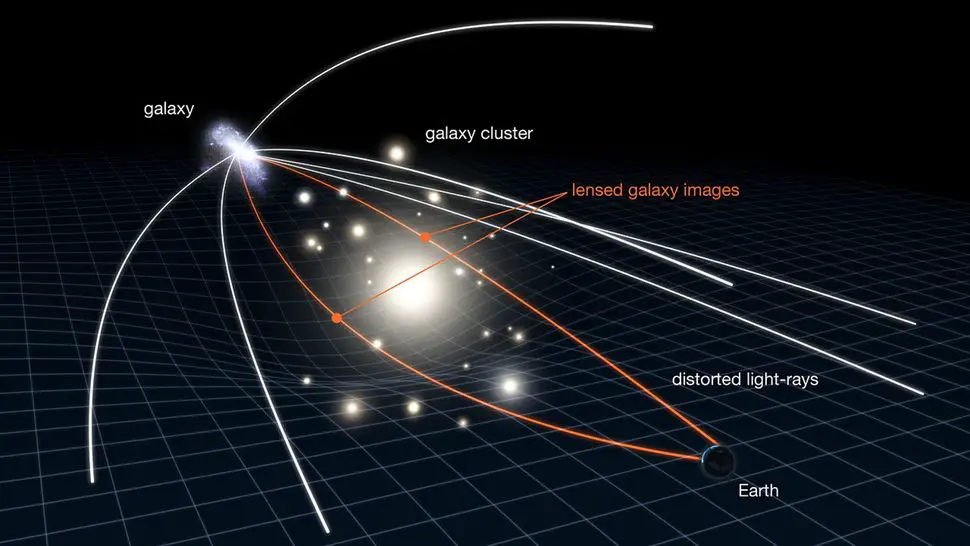NASA’s James Webb Space Telescope (JWST) has captured images of a rare, warped supernova named SN H0pe, which appears three times in a single frame due to gravitational lensing.

This discovery could potentially resolve a long-standing inconsistency in our understanding of the universe’s expansion rate, commonly referred to as the “Hubble tension.”
Unraveling the Hubble Tension
The Hubble tension is a discrepancy between two primary methods of calculating the universe’s expansion rate, known as the Hubble constant. One method relies on measuring the cosmic microwave background (CMB), while the other involves observing specific celestial objects like galaxies and supernovas. The two methods have consistently produced slightly different values for the Hubble constant, puzzling scientists for decades. SN H0pe, a type 1a supernova, could be a key to resolving this issue. Type 1a supernovas are considered “standard candles,” reliable reference points for measuring the universe’s expansion.
The Role of Gravitational Lensing
The supernova was discovered in images captured by the JWST in March. It appears as an arc of orange light surrounding part of the galaxy cluster PLCK G165.7+67.0, located around 4.5 billion light-years from Earth. The light arc is a result of gravitational lensing, an effect where light from a distant object is warped by the gravity of a mᴀssive foreground object. This phenomenon also magnifies the distant object, making it easier for researchers to analyze.

Implications for Cosmology
SN H0pe is particularly significant because it is the second most distant type 1a supernova ever detected. The strong gravitational lensing and duplication in the new images provide researchers with more data than usual. If JWST continues to identify more distant standard candles, the problem of Hubble tension may finally be solved, offering a more unified understanding of the universe’s expansion rate.
In summary, the discovery of SN H0pe by the JWST could be a game-changer in cosmology, offering a potential solution to one of the universe’s most perplexing mysteries.
Research Paper





